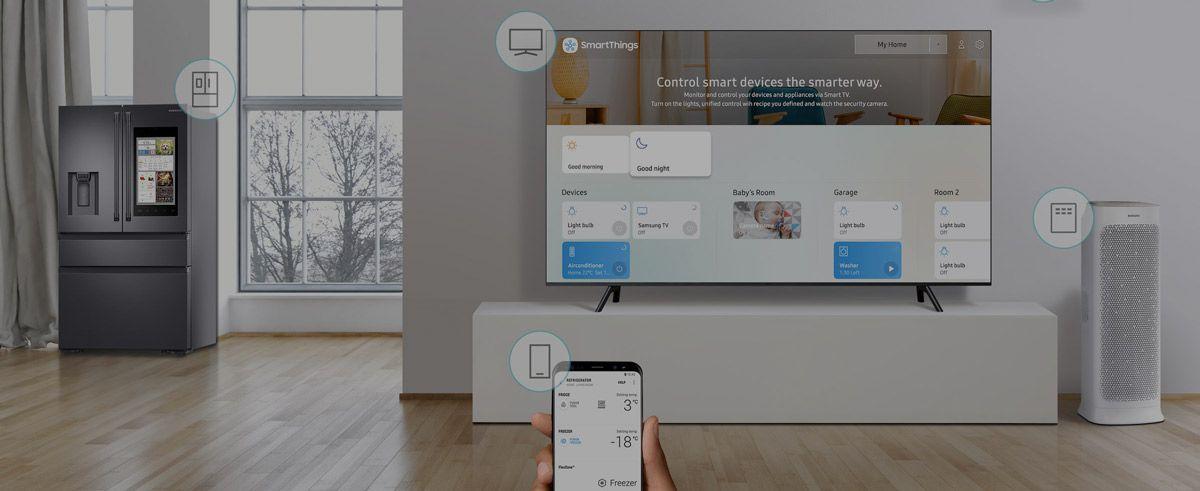Month: March 2023
How to Develop an App for the Internet of Things (IoT)
Why develop a custom Internet of Things application?
The IoT market is huge, and it has something to offer many other markets. It seems like the Internet of Things devices will soon be everywhere, from smart cities and agricultural fields to huge manufacturing plants and people’s homes and cars. Internet of things application development services are becoming more widespread, though it may still be a challenge to find good IoT developers.
In this article, we focus on consumer IoT because it’s the area where mobile apps will be most needed. In other sectors, for example, agriculture and enterprise business, IoT devices may not need mobile interfaces. They can connect directly to the cloud or be controlled using web apps.
IoT devices for consumers, on the other hand, typically use apps: people have their mobile devices at hand all the time. Smart homes are probably the first thing that comes to mind when you think about IoT for consumers. And smart home technologies are becoming more popular each year.
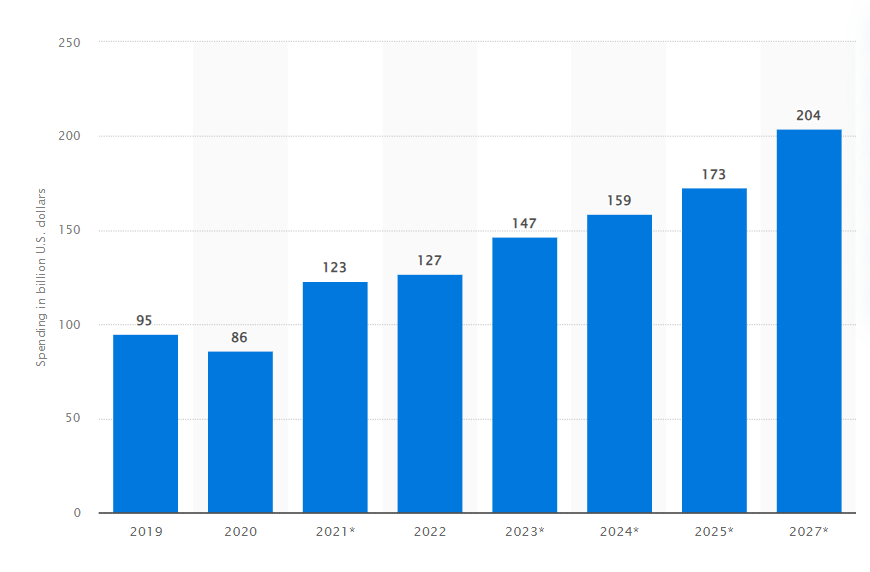
Source: Statista
But not only smart homes demand mobile interfaces for connecting devices. Consumers can use IoT for:
- Retail
- Agriculture
- Real estate
- Logistics
- Fintech
- Sustainability
- Automobiles
- Healthcare
- Child and pet care
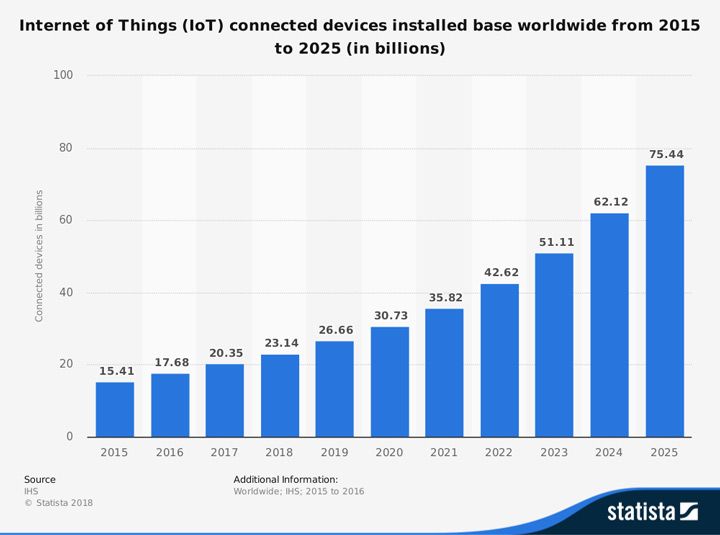
Growth of the IoT market for smart homes promises to be even more impressive. A Forbes survey shows that two-thirds of consumers say they’ll probably purchase IoT devices for their homes by 2019. Only half of respondents said they were likely to purchase wearables.
By 2022, total spending on consumer and industrial IoT technology and services will surpass $1 trillion.
What about smart and connected cars? According to Statista prediction, there will be over 400 million connected cars in operation by 2025, up from some 237 million in 2021. It’s projected that 96% of all new vehicles shipped in 2030 will have built-in connectivity.
Internet of things is one of the most promising technologies that will change the way people live in their homes, drive cars, work and entertain themselves
As you can see, the number of connected devices will only grow, and they’ll all require software. You can create an IoT mobile application and start conquering this market, which is far from saturated.
What you need to know about IoT app development
How can you create an IoT app? This of course depends on your idea. The set of features will be different for a smart home application and for a connected car app. However, there are some basic things you need to know before you start to develop app for the internet of things.
First, let’s look at the structure of any IoT system.
Major IoT components
Any Internet of Things system consists of four main components:
- Hardware
- Software
- Cloud
- Network
Hardware includes different low-energy sensors that work over Bluetooth and connect to the internet. You’ll need to decide whether you need third-party or custom hardware to implement your idea. A mobile device will also be a hardware component in your IoT system.
Software for an IoT system should be a cloud-based application, either web or mobile, that’s basically a dashboard for managing and controlling all IoT devices connected to it. This dashboard should also collect information from sensors and show it to users.
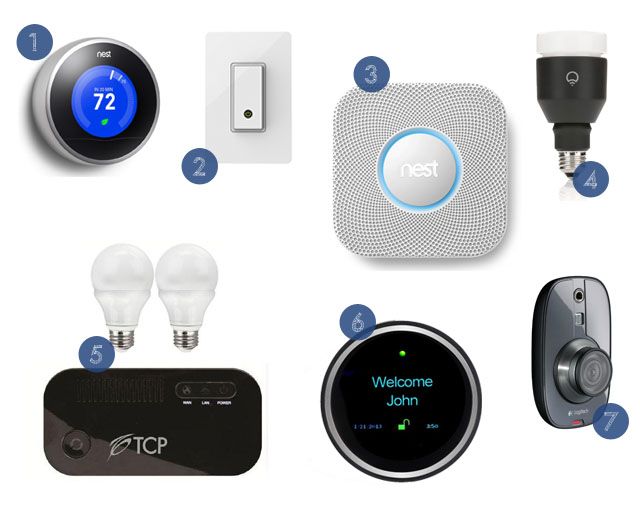
The cloud is one of the most important technologies for IoT. It processes the data and arranges it. The greatest advantage of the cloud is that you don’t need your own physical resources for storing data.
The network sends data both ways: from a mobile phone to sensors and devices and back. The network links all devices within the IoT system.
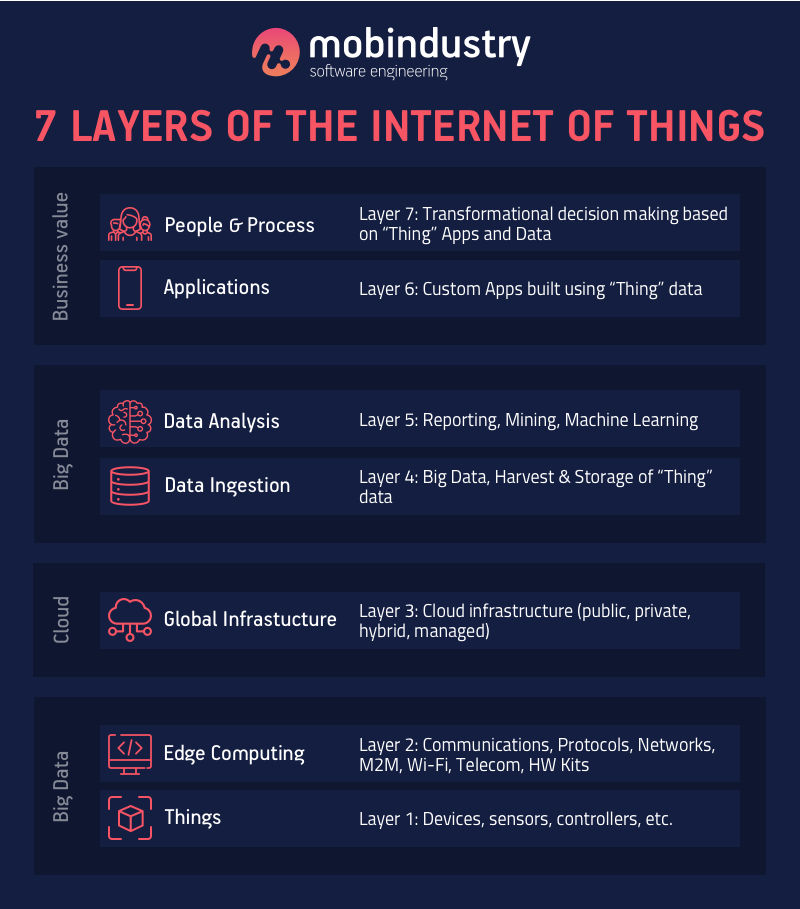
IoT challenges
Before you start to develop IoT apps, you should learn about the challenges the industry has yet to solve.
Security is the biggest concern when it comes to IoT. According to a survey by Bain, most buyers consider security to be their biggest concern when implementing IoT solutions.
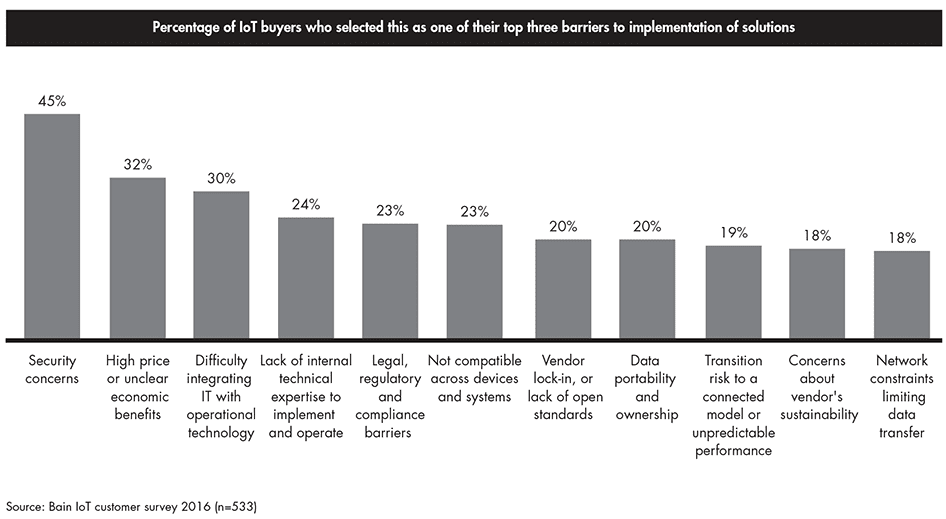
Because the whole IoT industry is poorly standardized, security rules for IoT are rather vague: each manufacturer and IoT software developer solves security issues in their own way, making IoT systems more vulnerable.
IoT networks have lots of entry points because of the large number of connected devices, so a hacker can find a vulnerability in just one place and then compromise the whole network. This can result in a hacker gaining access to all information from home microphones and wearables, for instance, exposing sensitive health data and user locations.
Security is a major issue for IoT, because lack of standards and a number of connected devices within one IoT ecosystem makes it easy for hackers to get access to data and control over the whole system
Technological inconsistency is another challenge the industry hasn’t yet solved. If you want to create an IoT application for a smart home, for example, you can’t be sure your mobile app will connect to all smart devices inside a home unless they’re also made by your company.
For example, if a customer buys smart light bulbs from one company and a thermostat from another, they probably won’t work together. So consumers are restricted to using only one producer’s devices, which makes the whole IoT industry fragmented: each company has its own standards, APIs, and connection and security standards.
Security and inconsistency are two major challenges of modern consumer IoT devices. Mobile apps have lots of standards and guidelines that allow them to work on different devices and connect to each other with the help of APIs. Internet of Things devices aren’t there yet.
Because of the potential of IoT, there are many startups offering platforms for creating more apps for the Internet of Things that will make devices work together as unified systems
How IoT is affecting mobile apps development
IoT in mobile app development is focused on customers and is primarily used in everyday situations. It has massive impact on how people live, making the life of users easier: just one app is now able to affect lots of devices that accomplish different tasks. The developers also see the influence of IoT technologies on their development process, as each year we see more and more IoT frameworks that have wider functionality and more possibilities for development.
However, because IoT is a rather complex technology, it requires a set of quite specific skills, so it can sometimes be a challenge to find a good IoT developer. Moreover, because IoT is hard to make secure, an IoT developer should also have expertise in cyber-security, otherwise, the system might be vulnerable.
Let’s explore how you can approach mobile development for IoT.
How to create an IoT app
1. Choose a platform
There are many platforms that you could use to build your IoT application. You can choose any of them, but pay attention to what technologies they support and how much they’ll cost.
These are proven platforms for IoT development:
- HomeKit
- Android Things
- ThingWorx
- Xively
- Ubidots
- Azure IoT Suite
- IBM Watson
- Oracle IoT
- Kaa
Many of these platforms are trying to solve the inconsistency issue, allowing IoT developers to connect devices from different vendors that speak different protocols into one unified system. For example, Google’s IoT platform, called Android Things, now supports devices from a number of manufacturers and can connect to low-energy sensors.
Apple’s HomeKit offers a set of approved devices that developers can connect to their IoT systems as well as guidelines for creating IoT software.
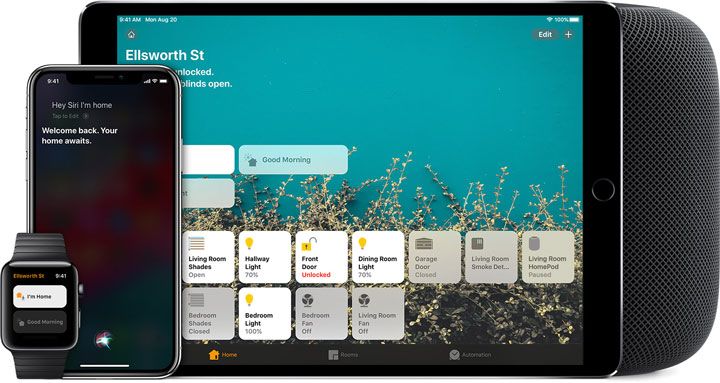
To give developers access to other devices that are outside of the Google and Apple ecosystems, Android Things and HomeKit offer their own APIs.
Using platforms is the best way of developing IoT apps.
2. Choose the hardware
If you aren’t going to produce your own hardware for your IoT project, you need to choose hardware from other device makers. First, this hardware should correspond to your product’s needs. Second, this hardware should be reliable, as its connection accuracy is crucial for your project’s success. Choosing sensors made by a reliable device maker can guarantee the quality.
3. Think of scalability in advance
Think about the pace at which you plan to develop your app’s functionality. Whether your app will stay relevant depends much on scalability. It has to manage increasing amounts of data and many different devices and processes. Cloud technology is best for IoT for this reason.
4. Make sure your app is fast
IoT apps have to be extremely fast. When it comes to sharing data and remotely controlling devices, the price of each lag is too high. Imagine a connected car that won’t immediately react to your commands. This is why performance and high-speed connections should be one of your top priorities.

5. Take good care of security
The absolute top priority for your IoT application must be security. Unfortunately, because of the large number of connected devices that all live in one network, IoT technology is rather vulnerable to data infringement.
And because of the areas where people use IoT most – their homes, cars, and healthcare devices – these attacks can result in exposing private and sensitive data.
Make sure you use secure tools to build internet of things applications.
Here are a few tips on ensuring security in your IoT app:
- Choose hardware vendors carefully – Some vendors that offer software for their devices can miss potential software vulnerabilities. For your IoT app, make sure to choose reliable hardware or run it by security specialists.
- Use proven IoT platforms – Much depends on the platform you use for your IoT application. Be sure to use reliable platforms that test their tools and update them regularly.
- Consider not only network attacks but also physical attacks – Any data stored on a device should be not only encrypted but also physically protected: make sure it isn’t easy to remove the storage.
- Use protected networks – All data that circulates between your app and devices through a server or the cloud should be encrypted.
- Apply best practices for app security – Use encryption, obfuscation, two-factor authentication, and other techniques to ensure that your IoT app and devices are used securely by authorized users.
Best examples of Internet of Things apps
Here are a few examples of the best consumer IoT applications. You’ll get an idea of how you can use IoT for different purposes to make people’s lives easier.
Nest
Nest is one of the best examples of an IoT application for smart homes. The company promises to automate your home and give you valuable insights on energy consumption. Nest is compatible with smart thermostats, doorbells, home alarm systems, smoke alarms, and smart cameras.
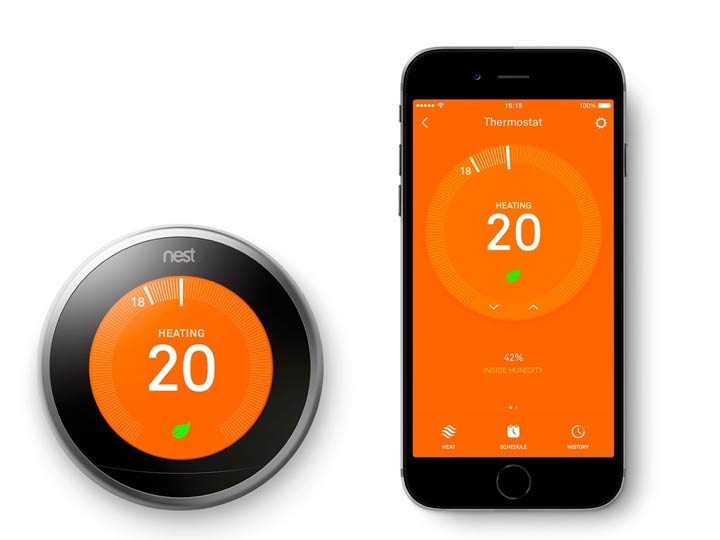
With Nest, you can remotely control all kinds of devices and receive alerts when there’s too much smoke or CO2 in your house or when the security alarm goes off. With Nest, you can see what’s happening inside and outside your house while you’re away and let people in or lock the doors completely.
One house can be controlled by up to 25 different people, including Google Home users, who have various levels of access. Users don’t need to share a password to a single Nest account. Instead, each user has their own account that’s associated with a set of IoT devices.

One of the greatest features of Nest is Home/Away assist. This feature manages the home automatically: for example, it can turn everything off and switch on the camera when nobody’s at home.
Blossom
Blossom is an agricultural application that helps you manage your garden or lawn. It automates watering according to the weather and the schedule you set.
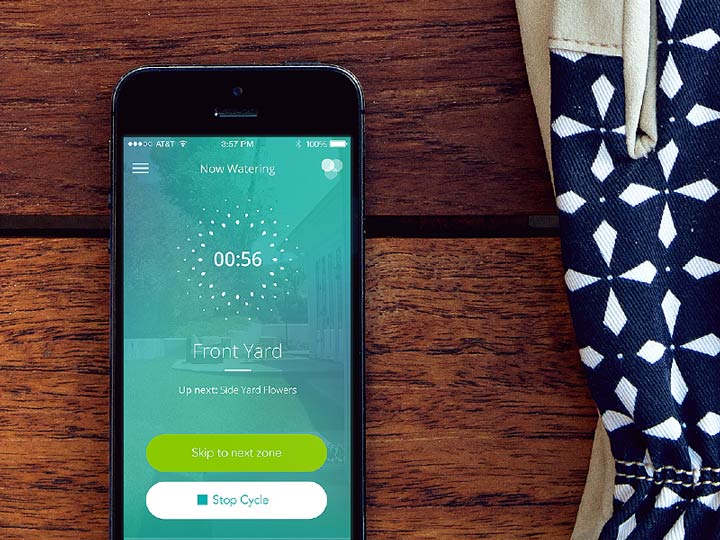
Blossom uses real-time weather analytics and processes it in the cloud to react to the weather and water your plants according to the conditions. It offers different setups for various zones, such as front yard, back yard, trees, and succulents.
Just install a Blossom water controller and its app.
Whistle
Whistle is an IoT application that takes care of your pets. Now you won’t have to run around to find your high-energy dog and keep an eye on it. All you need to do is attach a Whistle GPS tracker to your dog’s collar and install the app. It works great for cats too!

The application will show you the exact location and activity of your pet.
The app notifies you if your pet goes too far away. The greatest thing about Whistle is that it works with GPS and cellular detection technology instead of Bluetooth. While a Bluetooth tracker can locate your pet up to 50 feet away, Whistle will tell you where your pet is even if you’re thousands of miles away.
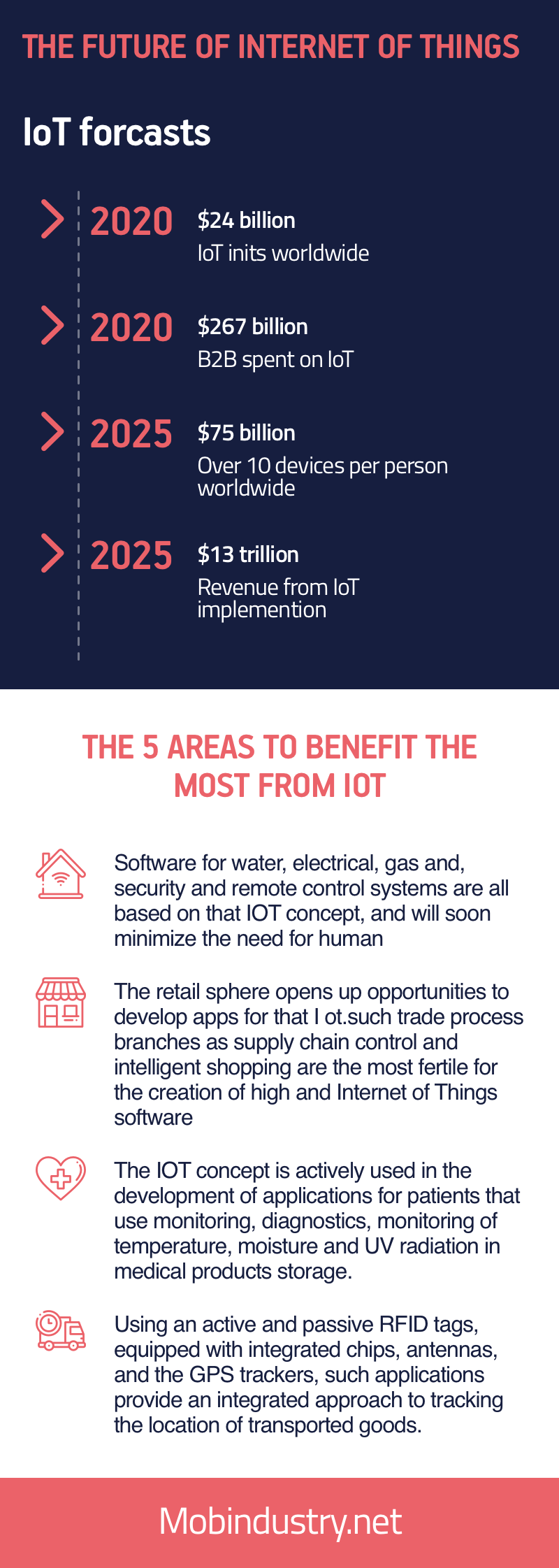
How much does IoT app development cost
The cost of IoT development services depends on several factors:
- your feature scope
- technology
- cost of third-party services
- hourly rate of a developer
- developer’s location
Hourly rate is the most important factor that influences IoT app development cost. For example, an app that costs $100,000 to develop in North America may cost only $24,000 if the development is outsourced to one of the top IoT app development companies in Eastern Europe.
The price for a standard IoT solution starts at $15,000 and can reach $25,000. A more complex project may cost $30,000 – $80,000 depending on your feature scope.
Final thoughts
IoT mobile applications are on the rise. They fully integrate technology into many aspects of people’s lives and free them from worries, daily chores, and the necessity to remember little things.
The most important considerations when building internet of things apps are:
- Security
- Network stability
- Speed
Without these, it’s nearly impossible to get loyal users who will not only download and use your app but also leave great reviews and recommend it to friends. To ensure that your app is secure, stable, and fast, you need to hire an IoT application development team that knows its stuff.
Mobindustry has created an IoT application for a kid’s smartwatch that allows parents to track where their children are. Just like Whistle, we used cellular and GPS technologies to make sure parents are able to track their children even when they’re far away.
If you want to build an IoT application, need consultation on IoT app architecture, or some advice on IoT security, we’re your team.

